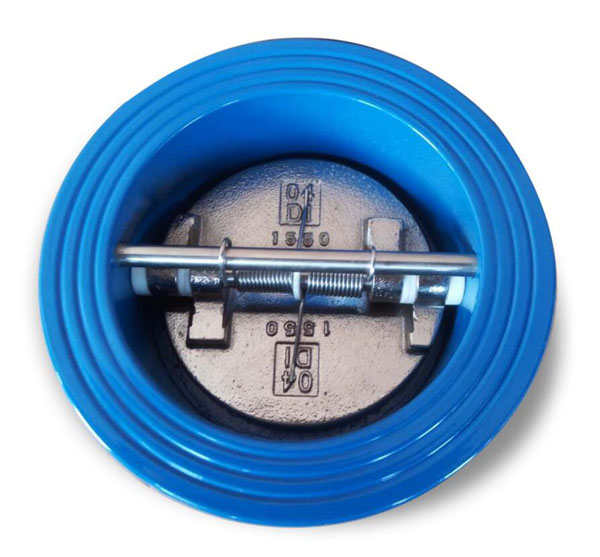Dec. 27, 2021
Check valve refers to a valve whose opening and closing parts are circular discs and rely on its own weight and medium pressure to generate actions to block the back flow of the medium. It is an automatic valve, also known as a check valve, one-way valve, non-slam check valve, dual check valve, return valve, or isolation valve. The movement of the disc is divided into lift type and swing type. The lift check valve is similar in structure to the stop valve but lacks the valve stem that drives the disc. The medium flows in from the inlet end (lower side) and flows out from the outlet end (upper side). When the inlet pressure is greater than the sum of the weight of the disc and its flow resistance, the valve is opened. On the contrary, the valve is closed when the medium flows back. The swing check valve has a disc that is inclined and can rotate around the axis, and its working principle is similar to that of the lift check valve. The check valve is often used as the bottom valve of the pumping device to prevent the backflow of water. The combination of check valve and stop valve can play a role in safety isolation. The disadvantage is that the resistance is large and the sealing performance is poor when closed.

It includes a swing check valve and lift check valve.
The swing check valve has a hinge mechanism and a valve disc like a door that rests freely on the inclined valve seat surface. In order to ensure that the valve clack can reach the proper position of the valve seat surface every time, the valve clack is designed in a hinge mechanism so that the valve clack has enough space for rotation and makes the valve clack truly and comprehensively contact the valve seat. The valve clack can be made of metal, or it can be inlaid with leather, rubber, or synthetic covering, depending on the performance requirements. When the swing check valve is fully opened, the fluid pressure is almost unimpeded, so the pressure drop through the valve is relatively small. The valve disc of the lift check valve is located on the sealing surface of the valve seat on the valve body. Except that the disc can be raised and lowered freely, the rest of this valve is like a shut-off valve. The fluid pressure lifts the disc from the seat sealing surface, and the backflow of the medium causes the disc to fall back onto the seat and cut off the flow. According to the conditions of use, the valve disc can be an all-metal structure, or it can be in the form of a rubber pad or a rubber ring inlaid on the valve disc frame. Like a shut-off valve, the passage of fluid through the lift check valve is also narrow, so the pressure drop through the lift check valve is larger than that of the swing check valve, and the flow rate of the swing check valve is restricted. rare.
The valve that opens or closes by the force of the medium flow to prevent the medium from flowing back is called a check valve. Check valves belong to the category of automatic valves, which are mainly used in pipelines where the medium flows in one direction, and only allow the medium to flow in one direction to prevent accidents check valve price.
According to the structure, it can be divided into three types: lift check valve, swing check valve, and butterfly check valve:
1. Lift check valves are divided into two types: vertical and horizontal.
2. The swing check valve is divided into three types: single, double, and multiple.
3. The butterfly check valve is a straight-through type.
The above check valves can be divided into four types in connection form: threaded connection, flange connection, welding connection, and wafer connection.
1. Cast iron check valve
2. Brass check valve
3. Stainless steel check valve
4. Carbon steel check valve
5. Forged steel check valve
1. swing type check valve
2. nonreturn check valve
3. swing check valve
4. double check valve
5. wafer check valve
6. non slam check valve
7. rubber check valve
8. double check valve
9. spring check valve
10. dual check valve
11. non slam check valve
12. silent check valve